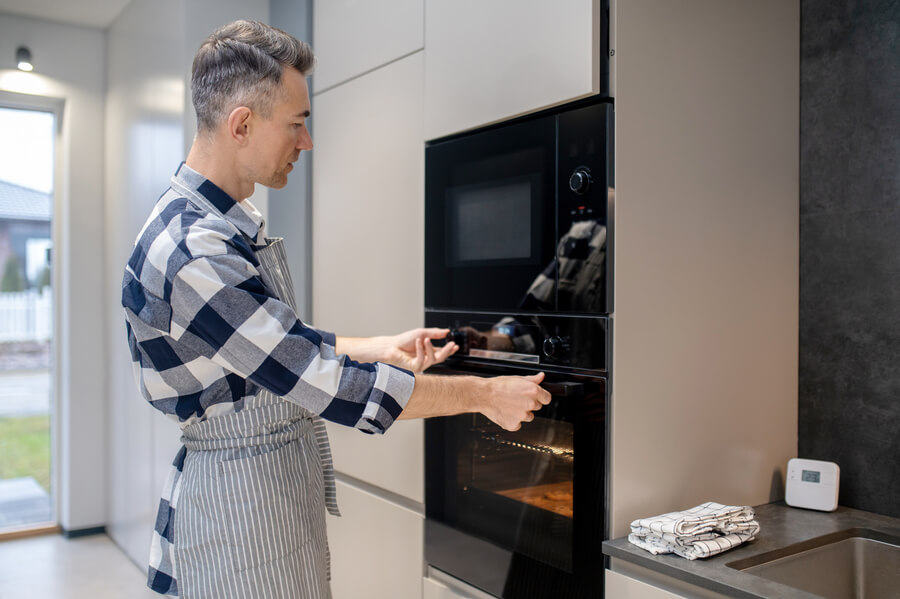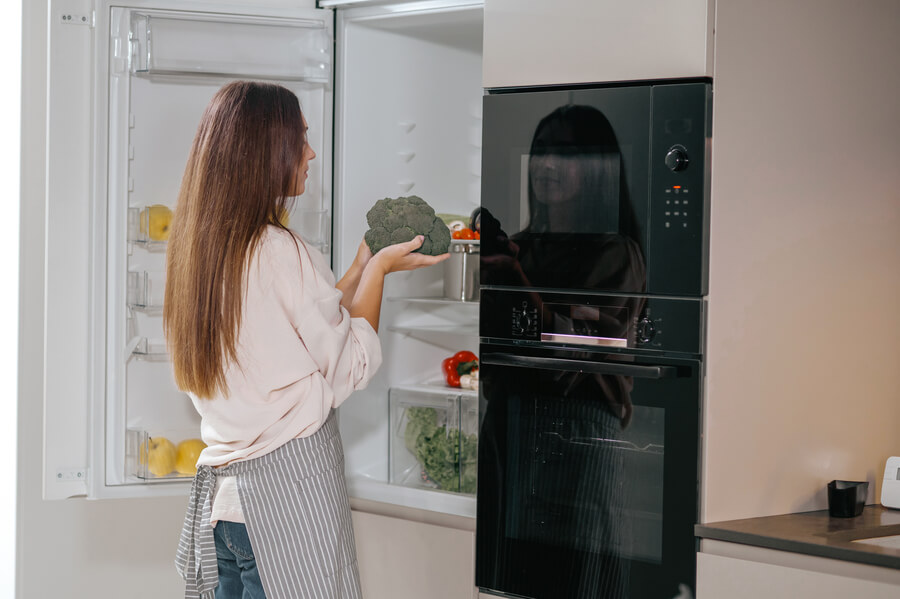Discovering the F9E0 code on your Whirlpool stove can be a cooking hiccup. This comprehensive guide breaks down the mystery behind the code, explaining why it happens and offering practical fixes.

The F9E0 error signals a glitch in the stove’s temperature control system, stemming from issues with the temperature sensor, heating element, or wiring.
We provide simple steps to troubleshoot and prevent future problems. Whether it’s a faulty sensor or a connection hiccup, we’ve got you covered.
What Does f9e0 Code on Whirlpool Stove Mean?
The F9E0 error code on a Whirlpool stove is related to an oven temperature issue. This code specifically points to a problem with the oven’s electronic control board.
When the control board detects that the oven isn’t reaching the desired temperature or is having difficulty maintaining a consistent temperature, it triggers the F9E0 error code.
Here’s a more detailed breakdown:
1. Control Board Malfunction
The control board is essentially the brain of the oven. It regulates various functions, including temperature control. The F9E0 code indicates that the control board has detected an anomaly or malfunction related to temperature management.
Solution: Reset the Oven
Sometimes, a simple reset can resolve electronic glitches. Please turn off the oven and unplug it for a few minutes. Then, plug it back in and turn it on. Check if the error persists.
If the error is still there, consider having a technician inspect the control board for any malfunctions. They may recommend repairing or replacing the control board.
Pro Tip: When resetting your oven, go the extra mile. After unplugging, hold the oven’s power button for a few seconds. This drains residual power and ensures a more thorough reset. It’s like a power nap for your control board—refreshed and ready to go.
2. Temperature Sensor Issues
The control board relies on temperature sensors to monitor and adjust the oven temperature. A faulty temperature sensor could lead to inaccurate temperature readings, triggering the F9E0 error.
Solution: Check the Temperature Sensor
Inspect the temperature sensor for any visible damage or displacement. If you have a multimeter, you can check its resistance at room temperature to ensure it falls within the specified range. Replace the sensor if needed.
Pro Tip: Test your temperature sensor like a seasoned chef tests a dish for perfection. Heat a small dish of water in the oven, and use an accurate thermometer to compare the water temperature with the oven setting. This hands-on approach gives you real-world insights into sensor accuracy.
3. Heating Element Problems
If the heating element is not functioning correctly, it can affect the oven’s ability to reach and maintain the set temperature. This can result in the F9E0 error code.
Solution: Inspect Heating Element
Examine the heating element for signs of damage or wear. A malfunctioning heating element can contribute to temperature issues. Replace it if necessary.
Pro Tip: Before declaring a heating element guilty, conduct a stress test. Set the oven to the highest temperature and monitor how quickly it reaches and maintains that heat. A sluggish performance might indicate a heating element on the brink, prompting timely intervention.
4. Wiring and Connection Problems
Faulty wiring or poor connections between components can disrupt the communication between the temperature sensors, heating elements, and the control board. These issues may lead to the F9E0 code being displayed.
Solution: Verify Wiring and Connections
Ensure all wiring and connections are secure and free from damage. Poor connections can disrupt communication between components. Repair or replace any damaged wiring.
Pro Tip: Treat your oven’s wiring like a highway—no roadblocks allowed. Apply a silicone-based electrical grease to connection points. This weatherproofs and enhances conductivity, ensuring a smooth information flow between components. It’s the secret sauce for a well-connected oven.

5. Power Supply Issues
In some cases, problems with the power supply to the oven may contribute to the F9E0 error. This could include issues with the electrical outlet, circuit breaker, or power cord.
Solution: Power Supply Check
Confirm that the oven is receiving a stable power supply. Check the electrical outlet, power cord, and circuit breaker. Address any power supply issues if identified.
Pro Tip: Install a surge protector for your oven, much like you would for sensitive electronics. Fluctuations in power can disrupt your oven’s equilibrium. A surge protector acts as a shield, absorbing and diverting power spikes before they reach your appliance, preventing potential errors.
If you need clarification on performing the troubleshooting steps yourself, or if the issue persists after attempting the above solutions, it’s advisable to seek the assistance of a qualified appliance technician. They have the expertise to diagnose and fix more complex issues.
Remember to prioritize safety when working with electrical appliances.
If in doubt, consult the user manual for your Whirlpool stove or contact Whirlpool’s customer support for guidance tailored to your specific model.
10 Prevention Tips
While some appliance issues can’t be prevented, there’s a wide range of preventive measures you can take to minimize the risk of encountering the F9E0 code or similar problems on your Whirlpool stove:
1. Regular Cleaning
Keep your oven clean, especially around the heating element and temperature sensor areas. Accumulated dirt and grease can affect the performance of these components.
2. Use Proper Cookware
Ensure that you’re using cookware that is suitable for your oven. Follow the manufacturer’s recommendations for the type of pans and dishes to use. Improper cookware can impact heating efficiency.
3. Avoid Spills
Be cautious to prevent spills and food debris from entering the oven’s internal components. Clean up spills promptly to avoid damaging the heating element or temperature sensors.
4. Check the Temperature Sensor Regularly
Periodically inspect the temperature sensor for signs of wear or damage. If you notice any issues, address them promptly to prevent inaccuracies in temperature readings.
5. Scheduled Maintenance
Consider scheduling regular maintenance checks for your Whirlpool stove, especially if it’s an older appliance. A professional technician can identify potential issues before they become significant problems.
6. Follow Proper Usage Instructions
Adhere to the manufacturer’s guidelines for oven use. Avoid exceeding the recommended temperature settings and cooking times, as this can strain the components and lead to issues.
7. Power Supply
Ensure that your oven is connected to a stable power supply. Power fluctuations can impact electronic components. Consider using a surge protector to safeguard against electrical spikes.
8. Educate Users
If multiple people use the oven, ensure everyone knows the proper usage and the importance of promptly reporting any issues. Early detection can prevent minor problems from escalating.
9. Prompt Repairs
If you notice any unusual behavior or error codes, address them promptly. Ignoring warning signs can lead to more significant problems down the line.
10. Keep the Area Ventilated
Adequate ventilation around the stove can prevent overheating. Ensure the vents and fans are not blocked, allowing heat to dissipate effectively.
By incorporating these preventive measures into your routine, you can help maintain the optimal performance of your Whirlpool stove and reduce the likelihood of encountering the F9E0 error code or other issues.

F9E0 Code on Whirlpool Stove: Conclusion
In conclusion, tackling the F9E0 Code on your Whirlpool stove isn’t just about resolving a technical glitch but empowering your kitchen endeavors.
By understanding the intricacies of this error and implementing the suggested solutions, you reclaim control over your culinary haven.
Whether it’s a simple reset, checking components like the temperature sensor and heating element, or ensuring a stable power supply, you’ve gained the know-how to troubleshoot confidently.
